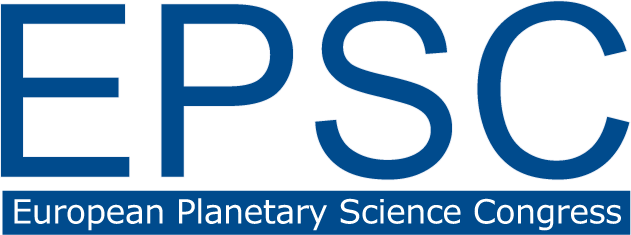
|
The Space Telescope Science Institute (STScI) is expanding the frontiers of space astronomy with advanced space telescopes and ever-growing data archives. STScI is the science operations center of the Hubble Space Telescope, the science and operations center for the James Webb Space Telescope, and the future Wide Field Infrared Survey Telescope (WFIRST). STScI also houses the Mikulski Archive for Space Telescopes (MAST) that supports a variety of astronomical data archives.

|
CSEM—technologies that make the difference
CSEM, founded in 1984, is a Swiss research and development center specializing in microtechnology, nanotechnology, microelectronics, system engineering, photovoltaics, and communications technologies. Around 450 highly qualified specialists from various scientific and technical disciplines work for CSEM in Neuchâtel, Zurich, Muttenz, Alpnach, and Landquart.
Further information is available at www.csem.ch
CSEM, founded in 1984, is a Swiss research and development center specializing in microtechnology, nanotechnology, microelectronics, system engineering, photovoltaics, and communications technologies. Around 450 highly qualified specialists from various scientific and technical disciplines work for CSEM in Neuchâtel, Zurich, Muttenz, Alpnach, and Landquart.
Further information is available at www.csem.ch

|
The University of Applied Sciences and Arts Western Switzerland (HES-SO) is the second largest high educational institution in the country. HES-SO is organized in 6 faculties, among them, Engineering and Architecture supports the development of space technologies related to Advanced materials, Communication systems, Micro- and nano-technology, Fluid mechanics, Optics, Robotics, Software, and System Engineering. HES-SO is anchored into the regional economy, and collaborates closely with SMEs, industries and research institutes.
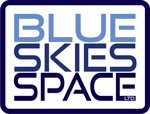
|
Blue Skies Space provides cost-effective, rapidly-delivered space facilities for users worldwide through a service-based model. We employ a commercial approach to create new opportunities for cutting-edge science. The Twinkle Space Mission is Blue Skies Space’s flagship mission conceived to deliver space based spectroscopy of exoplanets, solar system bodies, stars and disks in the visible and near-infrared wavelengths.

|
Andor’s a global leader in the pioneering and manufacturing of high performance scientific cameras for research and OEM markets. Andor's product portfolio incorporates a range of high performance detector solutions for Astronomy, from fast time resolution EMCCDs and sCMOS cameras to the slow scan, very large area CCDs. Crucially, Andor’s unparalleled commitment to superb quality and ease of maintenance is designed to maximize observing time and minimize cost of ownership.

|
Our journals and ebooks programme help to support the AAS mission to enhance and share humanity’s scientific understanding of the universe. Through our publications, including The Astronomical Journal (AJ), The Astrophysical Journal (ApJ), The Astrophysical Journal Supplement Series (ApJS), The Astrophysical Journal Letters (ApJL), and Research Notes of the AAS (RNAAS) you can disseminate your research to interested readers across the globe.
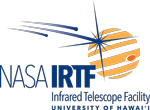
|
The NASA Infrared Telescope Facility (IRTF) is located near the summit of Maunakea on the island of Hawai'i. The observatory is operated and managed for NASA by the Institute for Astronomy at the University of Hawai’i. The primary mission of the IRTF is to provide ground-based observations that support NASA Solar System programs, including planetary spacecraft missions, the characterization of near-Earth objects, and fundamental planetary research.

|
The Planetary Data System (PDS) archives electronic data products from NASA planetary missions. PDS actively manages the archive to maximize its usefulness. All PDS-curated products, more than 1.6 PB, are stored in a well-defined format, peer reviewed, fully documented, and available online at https://pds.nasa.gov to scientists and to the public at no charge. The PDS is a member of the International Planetary Data Alliance (IPDA).

|
The research activities of the "Laboratoire de Planétologie et Géodynamique (LPG)" focus on four main topics: Marine Systems in Transition, Earth, Diversity of the Icy Worlds and Terrestrials Planets.
These activities extends from the Earth to the other solid bodies of the solar system and to the exoplanets. The technical platforms of the laboratory are devoted to observations, analysis and experiments over all scales, from spatial observations to field studies.
These activities extends from the Earth to the other solid bodies of the solar system and to the exoplanets. The technical platforms of the laboratory are devoted to observations, analysis and experiments over all scales, from spatial observations to field studies.
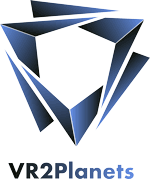
|
VR2Planets is a spinoff of the Planetology Laboratory of Nantes (CNRS/Univ. Nantes). The goal of VR2Planets is to create virtual reality applications for research and education in geosciences. We have a strong background in data integration coming from space exploration. The scientific background of VR2Planets engineers is a key strength to produce high fidelity and realistic virtual environments from the complete archives of images taken by robotic spacecraft.

|
With over 13 million bibliographic records, the NASA Astrophysics Data System (ADS) is the primary index of scholarly content in astronomy,
planetary sciences and physics. During the meeting the ADS team will showcase the main features of its new search system and interface.
Stop by to learn how to use the new ADS to search for people, papers, institutions, or topics and use the system to generate visualizations.
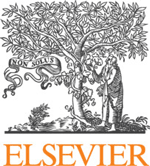
|
Elsevier is a global information analytics business, serving the research needs, of educators, researchers & students worldwide. Visit our booth # 15 to discover our range of Planetary & Space Sciences journals, including Icarus which is devoted to Solar System studies and endorsed by the Division for Planetary Sciences of the American Astronomical Society.

|
The NASA Exoplanet Science Institute (NExScI) is a science operations and analysis service organization for NASA Exoplanet Exploration Program projects. NExScI facilitates the timely and successful execution of exoplanet science by providing software infrastructure, science operations, and consulting to the NASA Exoplanet Exploration Program projects and their user communities. NExScI is part of IPAC, located on the campus of the California Institute of Technology.

|
Explore the Solar System and beyond with ESA’s fleet of space science satellites and discover hidden treasures in their vast data archives. Meet the scientists behind the spacecraft and hear more about how to use the rich datasets of our current and legacy missions. Find out what exciting missions we are launching next and collect a range of outreach material. We look forward to meeting you at the ESA stand!
